About 400 mysterious stone structures which archaeologists call “gates,” based off of their loose resemblance to “old fashioned field gates,” have been discovered in Saudi Arabia.
Made of low stone walls that are sometimes built in a rectangular shape the purpose and exact date of the gates are unknown although researchers believe that they date back thousands of years.
This picture shows several gates found clustered together. The “gate” at bottom right is about 1200 feet long. To put this in comparison an NFL football field is 360 feet long:
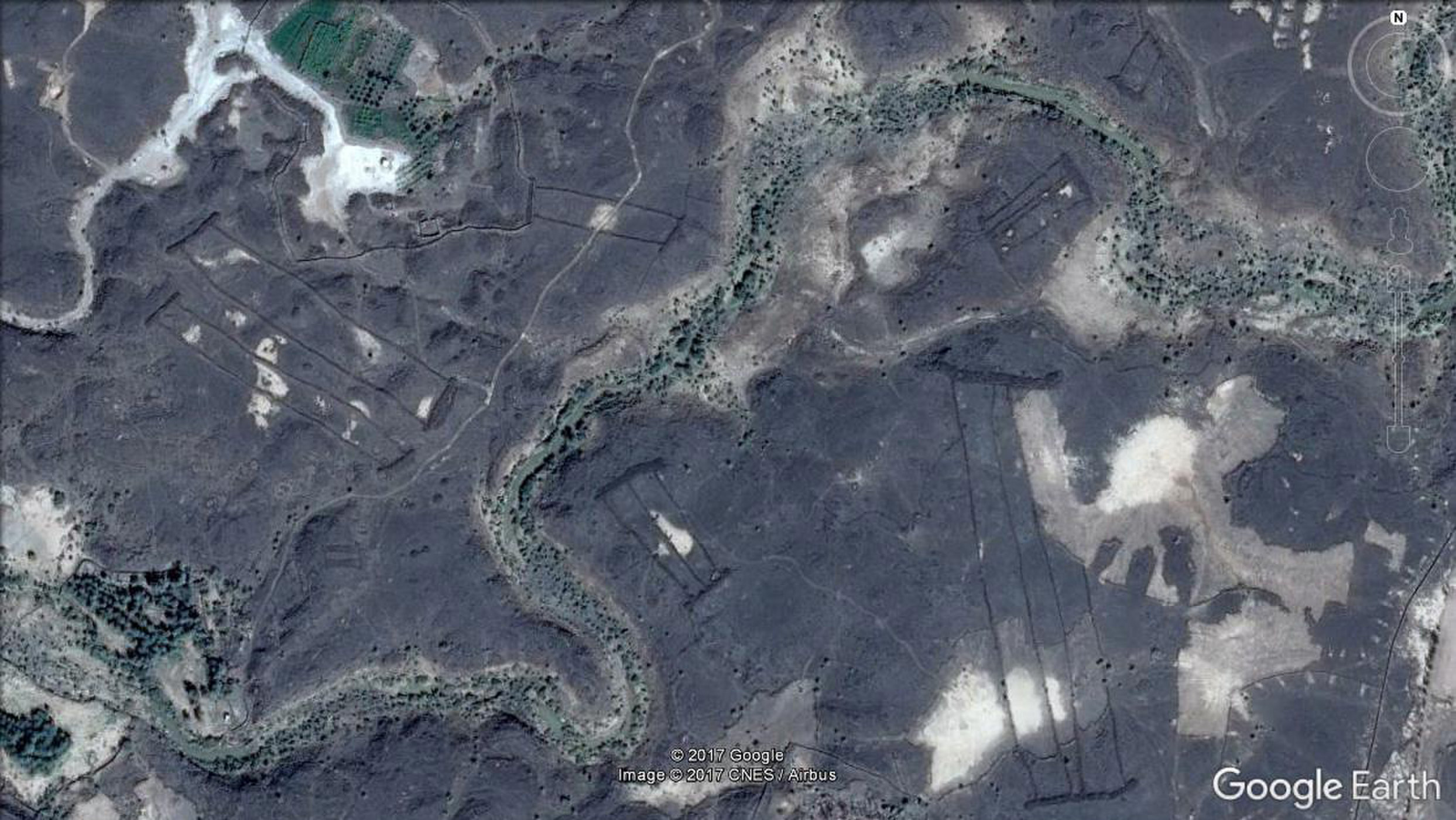
The gates come in a number of different shapes and sizes. Some of the gates, which archaeologists call “I-type” gates, contain one wall with heaps of rock at the ends of the wall. Two I-type gates, built side by side, can be seen in this picture along with other gates:
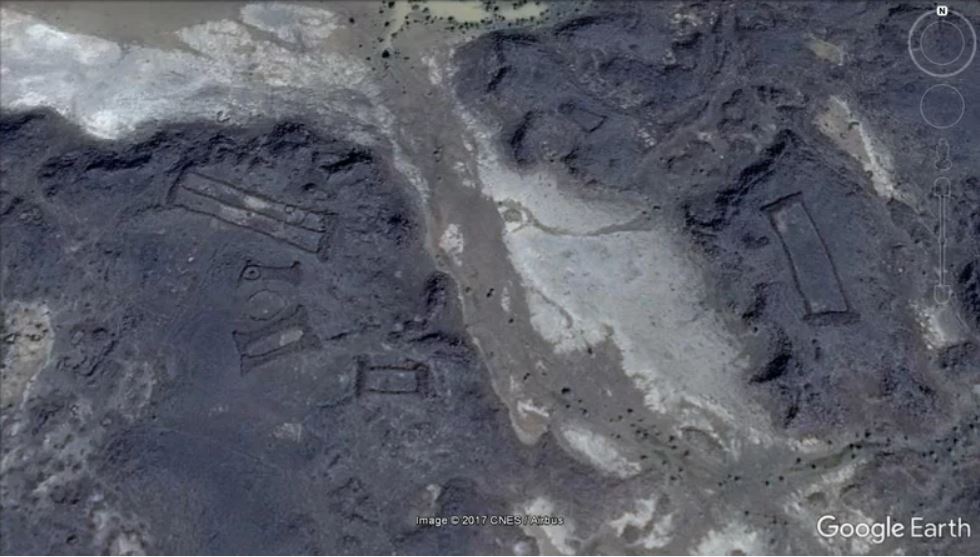
Another cluster of gates. The longest gate in this picture is about 950 feet. Why the gates cluster together is unknown. The gates tend to be located in lavafields that are inhospitable for human life. However thousands of years ago these areas would have been wetter and contained more life:
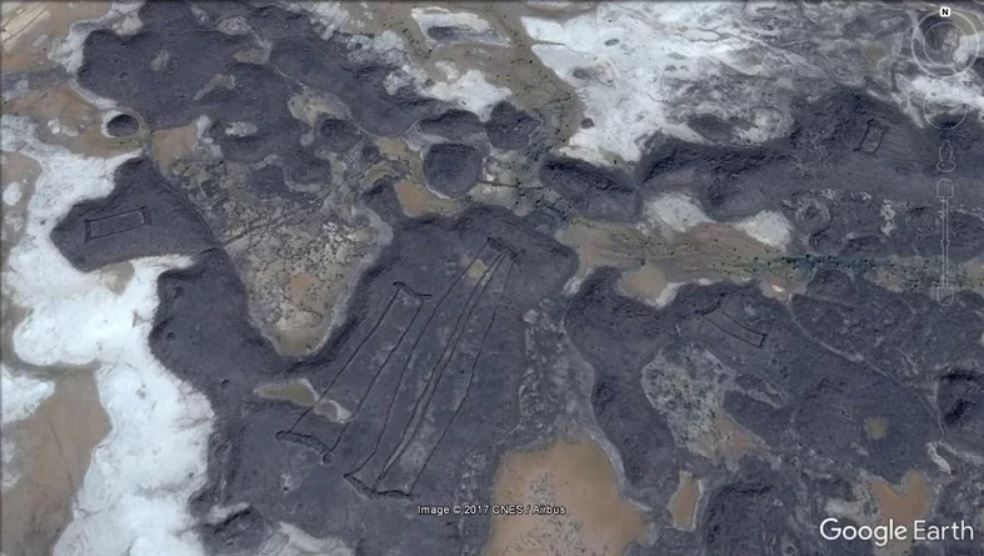
Other types of stone structures have also been found in Saudi Arabia. Often these stone structures are built on top of or even inside gates. This suggests that the gates are older than the other stone structures. This picture shows a gate that has a triangle stone structure with heaps of stone that lead to a bullseye shaped stone structure (possibly a tomb):
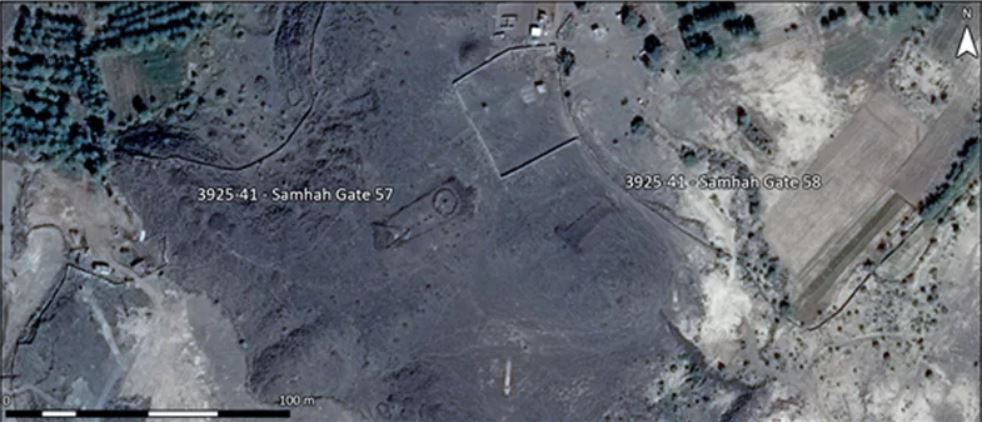
This picture of the lava dome that has gates on it was taken in the 1980s by Vic Camp. The taller lava dome behind it is called “Jabal Abyad” a name which means “white mountain” in Arabic. The lava domes are no longer active although in the past basalt lava poured from them:
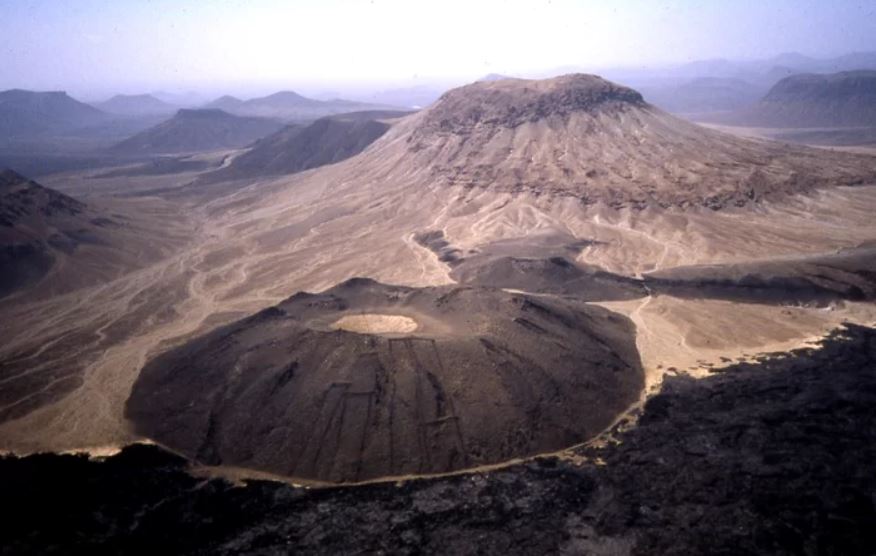
A few gates were found on the slopes of a lava dome. This lava dome, and others in the region, were mapped by volcanologists Vic Camp and John Roobol in the 1980s. The volcanologists were mapping the “Harret Khaybar” region of Saudi Arabia where many gates are located:
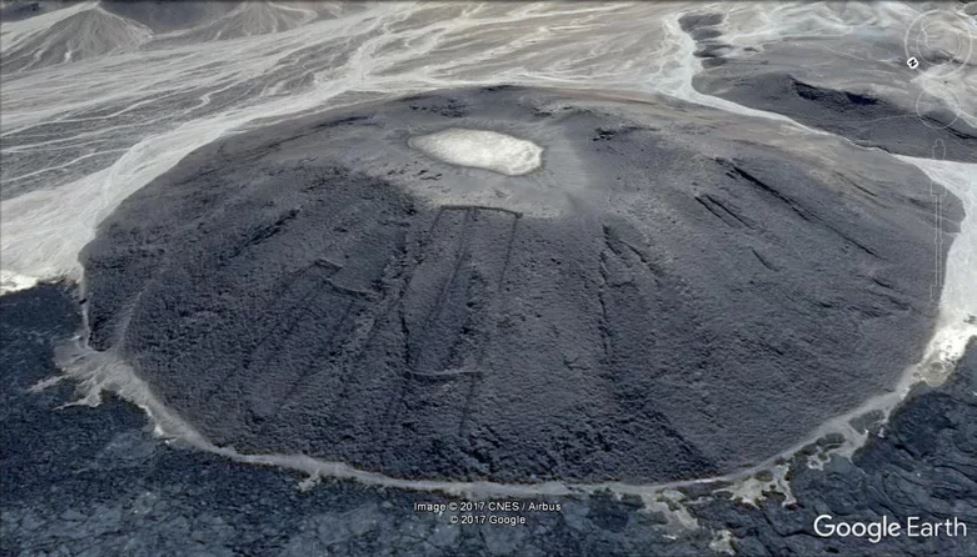
Picture of two more gates taken by Vic Camp in the “Harret Khaybar” region in the 1980s. The remains of a lava flow can be seen very close to them. The lava flow may be partially covering a third gate. Camp notes that the lava flows tend to cover the gates and other stone structures something which suggests that the gates are older than the lava flows:
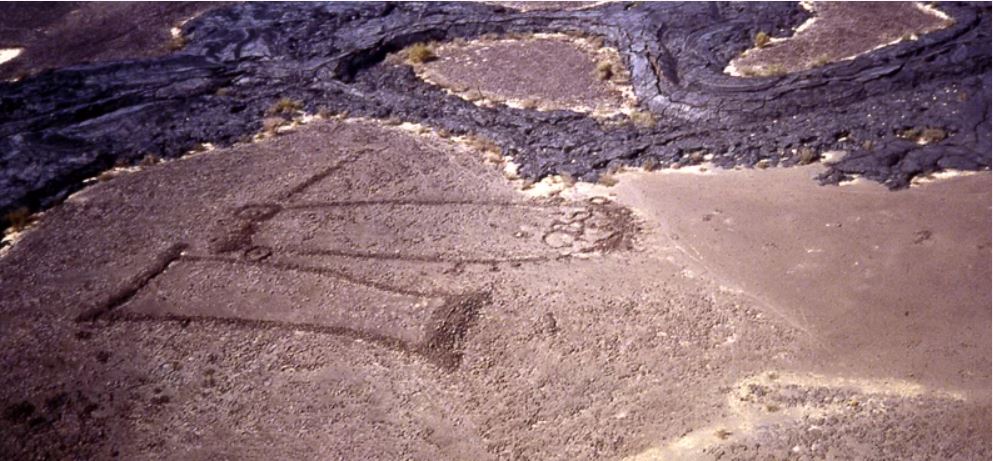
More stone structures, including gates, can be seen beside a lava flow in this photo. The date of these stone structures is unknown. Camp suggested that they could date back around 7,000 years:
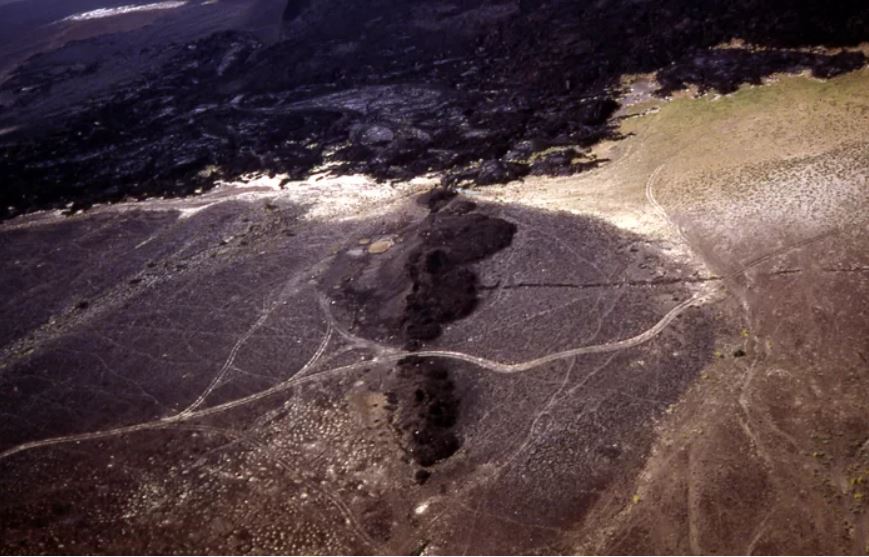
The “Harret Khaybar” region where many of the gates are located contains many volcanic vents:
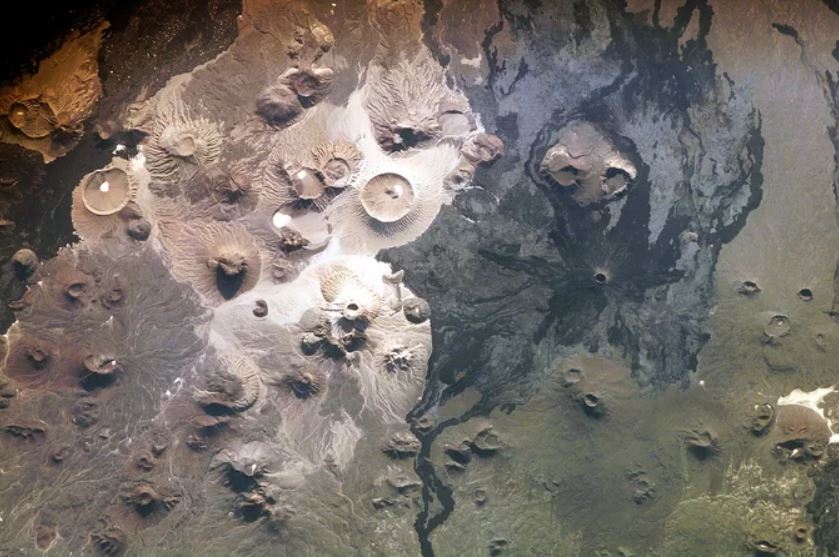
The study of gates has taken on some urgency as modern day development is threatening or has already destroyed some of them. This gate still existed in February, 2012, but was destroyed by the end of 2015. In addition to the satellite survey archaeological fieldwork needs to be done to determine exactly how old the gates are and what purpose they may have had:
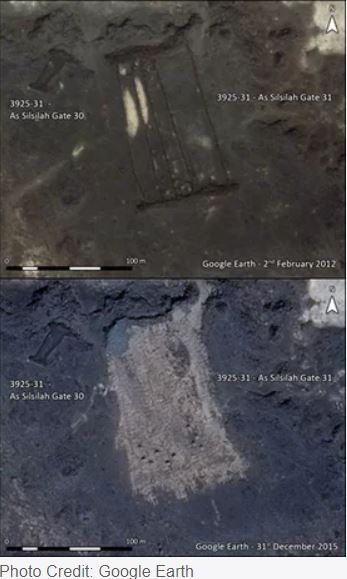
Another ancient mystery to resolve!












